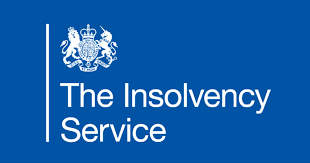Company Insolvencies in Q4 2020 were lower compared to that of Q4 2019 for England and Wales
- LMS

- Feb 6, 2021
- 2 min read
Updated: Mar 9, 2021
The statistics for Company Insolvencies in UK, Northern Ireland and Scotland for Q4 have been released and will be further explored here.
Note that caution must be applied when interpreting such statistics. The emergence of the coronavirus pandemic has had at least some effect on the timeliness of insolvency registration, especially since the March lockdown, when insolvency practitioners, intermediaries, Companies House and courts were unable to process insolvencies as per the usual manner.
The key points
England and Wales
Q4
In Q4 2020, there were 3,071 registered underlying company insolvencies
This being an increase of 17% from the previous quarter.
The increase was primarily driven by an increase in creditors voluntary liquidations (CVLs) and company voluntary arrangements (CVAs).
Comparing all other company insolvency procedures, they saw a decrease when compared to the statistics from Q3 2020.
Though the absolute numbers of company insolvencies rose between Q3 and Q4 2020.
The company liquidation rate per 10,000 active companies fell in the 12 months ending Q4, compared to 12 months ending Q3 2020.
It went from 32.3 to 29.2.
Ultimately this is due to the numbers of all company insolvency procedures being lower in Q4 2020 than Q3 – apart from CVAs.
This liquidation rate, for the 12 months ending Q4 2020, fell compared to 12 months ending Q4 2019 – when the rate was 42.1.
It is also key to note that compared to Q4 2019, company insolvencies were lower in Q4 2020.
2020
The total number of company insolvencies in the whole of 2020 reached its lowest annual level since 1989.
There were just 12,557 underlying company insolvencies - a decrease of 27% compared to 2019 numbers.
It is thought these numbers are driven by a low number of underlying CVLs (hitting its lowest annual level since 2007).
Compulsory liquidations and CVAs also reached its lowest annual levels since 1973 and 1993 respectively.
It is likely that at least part of the reduction in company insolvencies in 2020 was driven by Government measures put in place to respond to the unprecedented coronavirus pandemic.
Insolvency tool analysis
In terms of company insolvency tools, all other than administrative receivership appointments, which are low anyway, saw a decrease compared to that in 2019:
Compulsory liquidations decreased 55%
CVAs decreased by 26%
CVLs decreased by 22%
Administrations decreased by 16%
There was just 3 receiverships - up from the 1 in 2019.
There was a 5% difference seen in the total amount of CVLs making up all underlying company insolvencies; in 2020 it was 75% compared to 70% in 2019.
With this, a decrease was seen in the amount of company insolvencies from use of compulsory liquidations (17% to 11%).
Administrations accounted for 12% of all underlying company insolvencies, up by a percent compared to 2019. The proportion of insolvencies made up of CVAs stayed unchanged, at 2%.
Industry analysis
In the 12 months ending Q4 2020, the three industries experiencing the highest number of insolvencies are as follows:
Construction (with 2,042 insolvencies)
Accommodation and food services (1,701 insolvencies)
Wholesale and retail trade; repair of vehicles industrial grouping (1,673 insolvencies)
Decreases were seen across most other industries, compared to 2019 figures.
Contact Our Team Today on 0161 864 3824 or email us on info@landamsltd.com
Read the full publication of statistics here








Comments